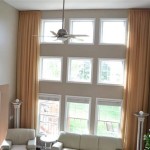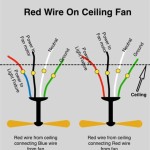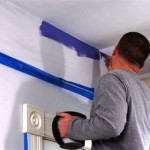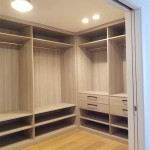The Allure and Practicalities of Houses with Floor-to-Ceiling Windows
Houses with floor-to-ceiling windows represent a significant architectural statement, offering a blend of aesthetic appeal and functional benefits. This design element, once relegated to luxury homes and modern architectural masterpieces, is becoming increasingly popular across a wider range of residential projects. The appeal lies in the enhanced natural light, panoramic views, and the seamless integration of indoor and outdoor spaces. However, incorporating floor-to-ceiling windows requires careful consideration of various factors, including structural integrity, energy efficiency, privacy, and cost.
The decision to integrate floor-to-ceiling windows goes beyond mere aesthetics. It involves a comprehensive understanding of the local climate, the orientation of the house, and the specific needs of the occupants. A successful implementation enhances the living experience, while a poorly planned execution can lead to discomfort, increased energy bills, and potential structural issues. This article examines the various aspects of houses with floor-to-ceiling windows, providing a detailed overview of their advantages, disadvantages, and the considerations necessary for their effective implementation.
Maximizing Natural Light and Views
One of the primary motivations for choosing floor-to-ceiling windows is the abundance of natural light they provide. Large expanses of glass allow sunlight to penetrate deep into the interior, reducing the need for artificial lighting during the day. This can translate to significant energy savings and a more pleasant, naturally lit living environment. Natural light is known to improve mood, increase productivity, and contribute to overall well-being. Studies have shown a correlation between exposure to natural light and improved sleep patterns.
Moreover, floor-to-ceiling windows offer unobstructed views of the surrounding landscape. Whether it's a cityscape, a garden, or a natural vista, these windows frame the outdoors, bringing the beauty of the environment into the home. This visual connection with nature can be particularly valuable in urban settings where access to green spaces may be limited. The panoramic views create a sense of openness and spaciousness, making even smaller homes feel larger and more inviting.
The positioning of the windows plays a crucial role in maximizing their benefits. South-facing windows, for example, will capture the most sunlight throughout the day, while east-facing windows are ideal for morning light. Careful consideration of the sun's path and the orientation of the house can ensure optimal light capture and minimize glare. In some cases, strategically placed overhangs or awnings may be necessary to control the amount of sunlight entering the house during peak hours.
Addressing Energy Efficiency and Insulation Concerns
While floor-to-ceiling windows offer numerous aesthetic and functional benefits, they also present challenges in terms of energy efficiency. Glass, as a material, is a relatively poor insulator compared to solid walls. This means that heat can easily escape during the winter months and enter during the summer, leading to increased energy consumption for heating and cooling. Therefore, selecting the right type of glass and implementing appropriate insulation strategies is crucial for minimizing energy losses.
Double-paned or triple-paned windows, featuring low-E coatings and gas fills, are essential for improving insulation. Low-E coatings reduce the amount of infrared and ultraviolet light that can pass through the glass, helping to keep heat inside during the winter and outside during the summer. Gas fills, such as argon or krypton, further enhance insulation by reducing heat transfer between the panes of glass. The U-factor, which measures the rate of heat transfer through a window, is a key indicator of its insulation performance. Lower U-factors indicate better insulation.
In addition to the type of glass, proper framing and sealing are also crucial for preventing air leaks. High-quality window frames made from materials such as fiberglass or wood can provide better insulation than aluminum frames. Ensuring that the windows are properly sealed around the edges prevents drafts and minimizes energy loss. Regular maintenance, including inspecting and repairing seals, is necessary to maintain optimal energy efficiency over time. Furthermore, considering window films that provide UV and heat protection can assist in reducing energy consumption and safeguard interior furnishings from fading.
Maintaining Privacy and Security
Another important consideration for houses with floor-to-ceiling windows is privacy. Large expanses of glass can leave occupants feeling exposed, particularly in densely populated areas or on busy streets. Balancing the desire for natural light and views with the need for privacy requires careful planning and the implementation of appropriate solutions.
One common approach is to use window treatments, such as curtains, blinds, or shades. These provide adjustable levels of privacy, allowing occupants to control the amount of light and visibility into the house. Motorized shades can be particularly convenient, allowing for easy adjustment from anywhere in the house. The choice of window treatment depends on the desired level of privacy, the aesthetic style of the house, and the budget.
Another option is to use frosted or tinted glass. Frosted glass provides a high level of privacy while still allowing light to pass through. Tinted glass reduces visibility from the outside while also helping to control glare and heat gain. One-way mirrors are another, more specialized, solution that provides privacy during the day, though the effect reverses at night when the interior is illuminated.
Beyond privacy, security is also a concern. Large windows can be potential entry points for intruders. Installing security film on the glass can make it more resistant to breakage. Security film is a clear, adhesive film that is applied to the inside of the window, making it more difficult to shatter. Alarm systems and security cameras can also be integrated to provide additional layers of protection. Strengthening window frames and using laminated glass are also viable options to increase security.
Structural Considerations and Cost Implications
The installation of floor-to-ceiling windows presents several structural challenges. Unlike traditional walls, which provide significant load-bearing support, large expanses of glass offer minimal structural support. This means that the building's structural design must compensate for the lack of support provided by the windows. This often involves reinforcing the surrounding walls and beams to ensure that the building remains stable and structurally sound.
Engineers must carefully assess the building's load-bearing capacity and design appropriate support structures to accommodate the windows. This may involve using steel beams or reinforced concrete to distribute the weight of the building evenly. The type of foundation and the soil conditions also play a role in determining the appropriate structural design.
The cost of installing floor-to-ceiling windows can be significantly higher than the cost of installing traditional windows. The larger size, specialized glass, and structural modifications all contribute to the increased cost. High-performance glass, such as triple-paned windows with low-E coatings and gas fills, can be expensive, but they are often necessary to achieve adequate energy efficiency. The cost of labor for installation can also be higher due to the complexity of the project. Obtaining multiple quotes from reputable contractors is essential for ensuring that the project is completed within budget. Furthermore, cost-benefit analysis of long-term benefits such as energy savings should be considered.
Ultimately, incorporating floor-to-ceiling windows into a home requires a careful balance of aesthetic desires, functional needs, and financial considerations. A well-designed and properly installed system of floor-to-ceiling windows can dramatically enhance the living experience, providing abundant natural light, stunning views, and a seamless connection with the outdoors. However, neglecting the practical considerations of energy efficiency, privacy, security, and structural integrity can lead to significant problems down the road. Thorough planning and collaboration with experienced architects, engineers, and contractors are essential for ensuring a successful outcome.

Floor To Ceiling Windows Help Achieve Modern Aesthetic Pella

50 Modern Homes With Floor To Ceiling Windows

Floor To Ceiling Windows Authentic Window Design Elmsford Ny

Joie De Vivre Floor To Ceiling Windows Brian Schmidt Builder

Floor To Ceiling Windows Bellaire Fine Homes

Floor To Ceiling Windows Houseplans Blog Com

How Floor To Ceiling Windows Help Shape A Home Elite Design Group

Floor To Ceiling Window Solutions Living The Dream Home Inspo

Floor To Ceiling Windows That Will Expand Your Space Decoist

Floor To Ceiling Windows For Scottsdale Home Pella Arizona








